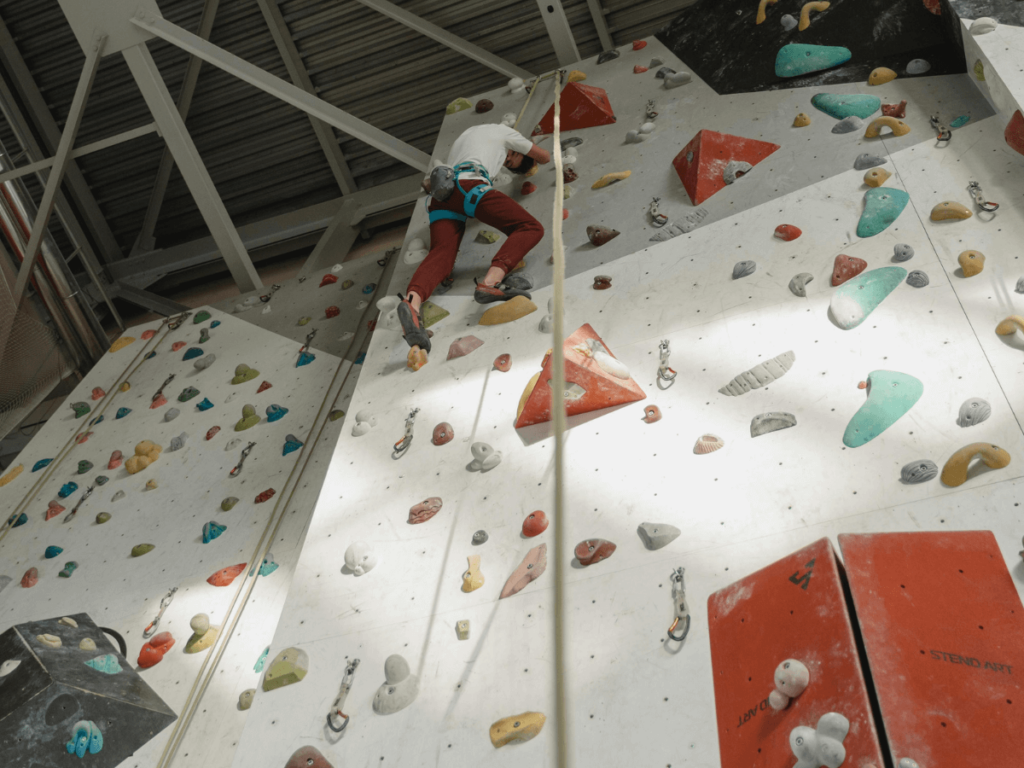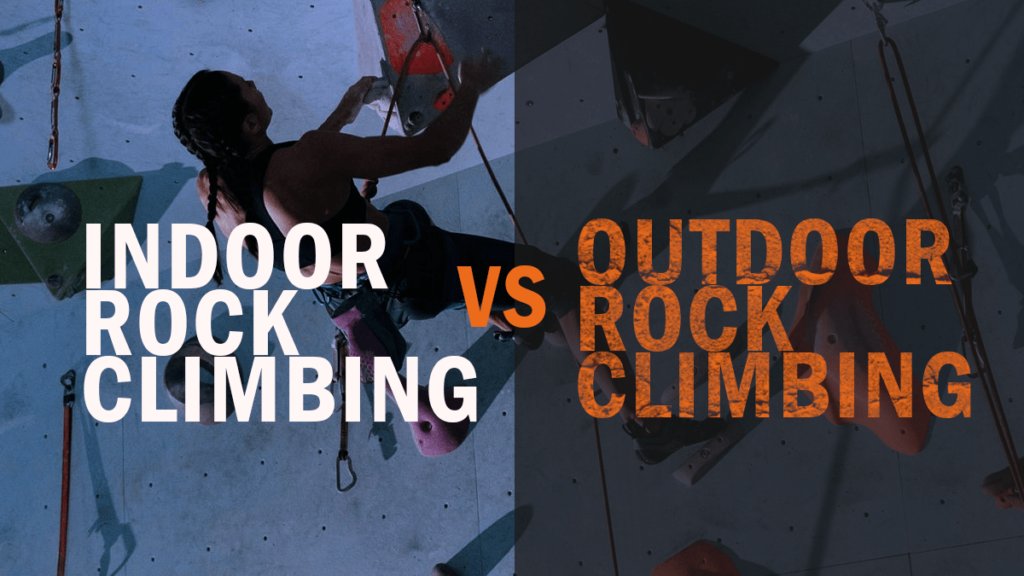In the 1960s, rock climbers ascended big cliff faces and scrambled up various rock features. Today, you’ll find people who identify as rock climbers who have never touched natural rock and spend their days pulling on colorful plastic holds. Despite what some may say, one type of climbing is not inherently better. As the sport grew over the decades, indoor rock climbing quickly became popular as a way to train for outdoor climbing and, in turn, created a world of its own with competitions and beautiful communities. While outdoor and indoor rock climbing fall under the big umbrella of the sport, they differ in many ways from the sub-disciplines of climbing they provide to the movement to the hold types.
Most likely, if you’re reading this, you find yourself in the new generation of climbers introduced to the sport through a commercial climbing gym. You are looking to understand how the sport, as you know it, differs from outdoor, real-rock climbing. Some of you may have been on the opposite side of the story, growing up in an area where outdoor climbing found you first.
Indoor vs. outdoor rock climbing

Indoor Rock Climbing
- Padding/Safety: Climbing gyms have pre-padded bouldering and top-rope areas to protect against falls.
- Rope Setup: The top ropes will be pre-setup on fixed anchors, and some gyms may have belay devices pre-attached to each top-rope station. Quickdraws and cold shuts/anchors for leading will be pre-bolted on the walls.
- Distinguishing Set Climbs: Route setters, a unique career position created to make up climbs for indoor climbing gyms, distinguish each boulder problem and rope route by different colored holds or tape.
- Falling: When bouldering indoors, you generally do not need a spotter, as the landing pads do not have gaps, and route setters consider the potential for risky falls when setting a climb.
- Climbing Disciplines Supported: Indoor climbing facilities typically offer some combination of:
- Bouldering
- Top rope
- Lead
- Speed
A few climbing competitions simulate ice climbing but on artificial walls.
- Gear: It varies slightly depending on which climbing discipline and gym. Generally speaking, you need less gear indoors than outdoors, and climbing gyms offer rental services if you don’t have your gear. See the Climbing Disciplines Supported to guide your gear search.
- Top-Outs: Most indoor boulders do not end with top-outs. It’s either the top of the wall or the last hold finish, and then you climb or jump down to the mats.
- Life-span of a climb: The beauty of indoor climbing is that you can add and remove holds at will. Thus, routesetters routinely change the climbs on the wall, meaning the lifespan of indoor climbs ranges from a few days to weeks to months. Eventually, all the climbs will change, and new ones will be open to try.
Outdoor Rock Climbing
- Padding/Safety: Outdoor climbing requires bringing crash pads to protect against falls. Falls from climbs may be riskier because objects like trees, rocks, and other natural features may prevent you from putting the crash pads flat on the ground, or you could get hit if you fall in an unideal position.
- Rope Setup: When you go outdoor rock climbing, you must set up your top rope by either setting up an anchor at the top of the cliff (i.e., off a tree) or having someone lead the climb and leave the rope up. Depending on where you are climbing, sport routes may have perma draws or cold shut anchors, but if not, you’ll have to bring your quickdraws to clip into the bolts and bolt anchors.
- Distinguishing Set Climbs: While natural rock can have distinctly colored spots or features, there are no brightly colored hand and foot holds or color-coordinated paths to follow. Guidebooks can provide a description or image of the rock face the climb is on and the general path, along with information about the start or crux moves. However, when you’re on the wall, you’ll likely have to spend time testing out what works as a hand or foot. Sometimes, more trafficked climbs will have visible chalk marks on the main handholds, but finding feet or intermediate hands is up to you!
- Falling: When bouldering outdoors, it is best to have spotters actively watching you climb so they can guide your fall onto the crash pads and move them around as you progress along the problem. On the top rope, you don’t double wrap the rope around the anchor like indoors, so the belayer will feel the weight of the climber in the rope more intensely. On lead, the placement of bolts is generally further apart than indoors. There is an increased potential for further falls. Check the guidebook for where you are climbing for information about sketchy or dangerous falling areas, as you may choose to wear a helmet for added safety.
- Climbing Disciplines Supported: Outdoor climbing offers more climbing disciplines than indoor. Options include:
- Boulder
- Top rope
- Lead (single and multi-pitch)
- Trad (short for traditional climbing, where you place your safety gear as you progress up the wall)
- Alpine
- Ice
- Big-wall (spending multiple days on the wall)
- Free-soloing (Please only consider this discipline if you are a professionally trained and experienced climber).
- Gear: Like indoors, gear needs will vary depending on the type of climbing you’ll be doing. Unlike indoors, you’ll likely need to purchase or borrow your gear unless you’re going on a guided climbing excursion, where they provide it. See the Climbing Disciplines Supported to guide your gear search.
- Top-Outs: Most outdoor boulders end in a top-out. To finish the climb, you must climb over the lip of the boulder to stand on top. Afterward, you can walk or descend a less steep side of the rock.
- The lifespan of a climb: Where indoor boulders and routes change frequently, outdoor climbs will always remain (unless some massive natural disaster destroys the rock). Occasionally, a good hold will break off the rock face, changing how you complete the climb or making it more difficult. But, you can keep returning to the same climb year after year, and it will remain unchanged.
There are reasons to love both indoor and outdoor rock climbing. Outdoors is where the sport started, but indoor climbing has become increasingly popular, making it more accessible to a larger population. If you have the means and time, both are worth trying, with each promising unique challenges and days worth of fun. Hopefully, this blog helped clarify how the two areas differ and highlighted where they overlap. Don’t hesitate to ask questions and share ideas below!

